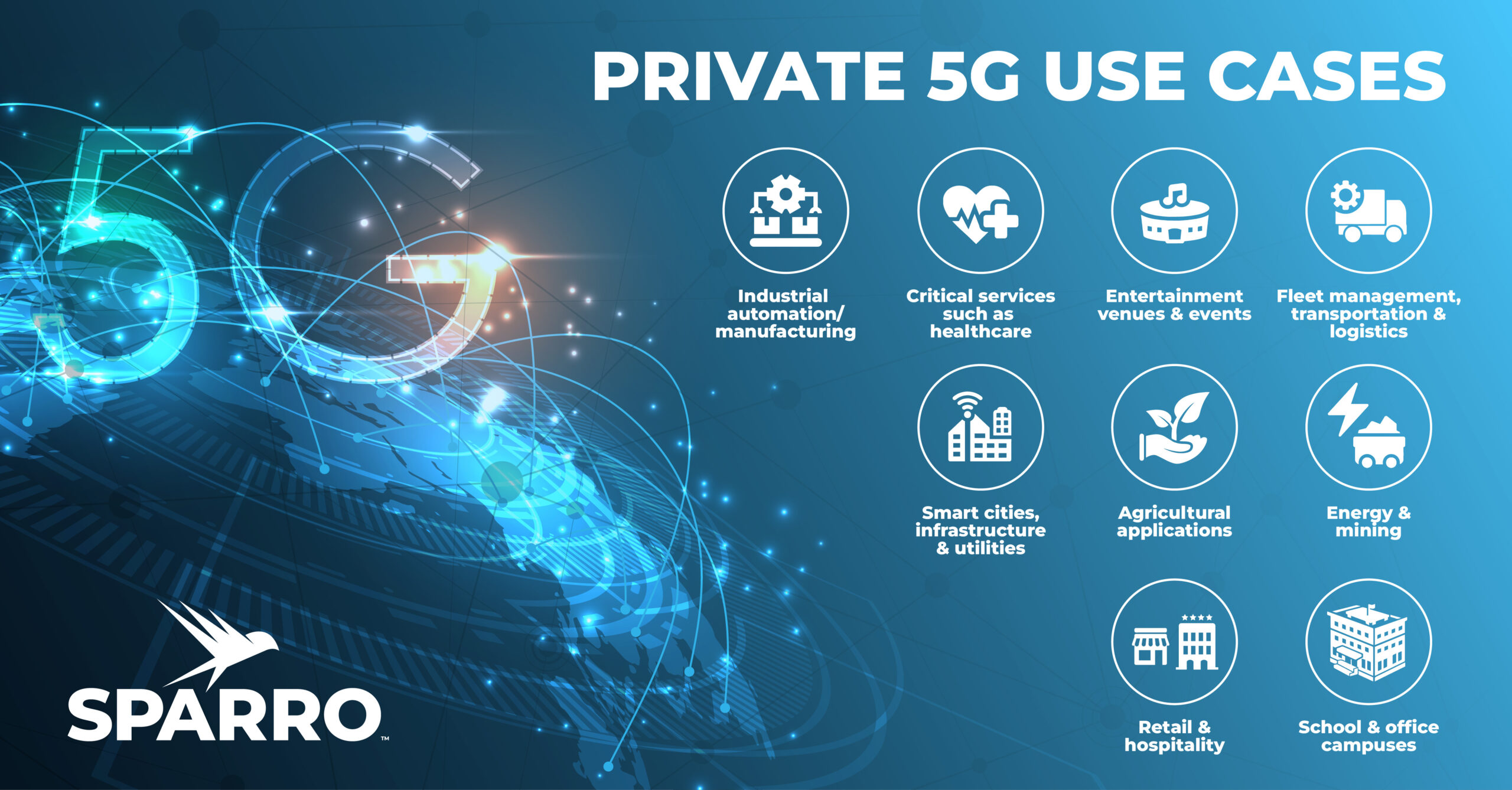Table of Contents
As enterprise business operations increasingly rely on digital communication, they need faster, more reliable, and secure wireless connectivity. However, Wi‑Fi struggles with interference and limited capacity. Public 5G is fast but shared, with no guarantee of performance or security. Integrating private 5G into your existing network strategy helps address these issues.
When your operations depend on real-time communication, seamless device connectivity, and secure data transmission, private 5G provides the reliability that public networks and Wi-Fi alone cannot guarantee. Enterprises get complete control over coverage, bandwidth, latency, and security, all on their own site. IT and OT teams can prioritize critical traffic, enforce SIM-based access, and isolate sensitive systems to ensure optimal security.
Adoption is accelerating. The private 5G market is currently valued at USD 3.86 billion and is projected to reach USD 17.55 billion by 2030. This represents a CAGR of 35.4%.
Private 5G provides ultra-low latency, the ability to support many devices, and network slicing. These capabilities power real-time automation, robotics, and secure data handling across industries. It’s clear why so many enterprises are incorporating private 5G into their network strategies. But how can it best be integrated into the existing technology infrastructure?
Why IT/OT Integration
Private 5G shines when integrated with existing IT and OT systems:
- Devices and systems – Sensors, robots, edge computing nodes, and back-office apps run on a unified, secure backbone.
- Edge processing – Data is processed close to the source, enabling fast analytics and automation without relying entirely on the cloud.
- Unified data flow – Private 5G supports a unified namespace, making data easier to normalize, govern, and act on.
In this context, integration matters because IT and OT often approach technology differently. OT teams focus on uptime, reliability, and safety. IT teams handle scalability, vendor contracts, and security frameworks. If integration is managed poorly, both sides face trade-offs.
Private 5G helps bridge these differences. It gives OT the reliability they demand while offering IT the tools to enforce policies, optimize costs, and manage the network at scale.

Use Cases
Some key use cases for private 5G include:
- Manufacturing – Autonomous robots, defect detection, and high-speed control loops are just some of the applications that require ultra-low latency and high reliability.
- Healthcare – Hospitals use private 5G for fast, secure imaging transfers (e.g., MRI or CT scans) and continuous patient monitoring.
- Smart venues – Stadiums and logistics hubs rely on private 5G to connect sensors, cameras, and applications in real time without public network congestion. They also facilitate communication among teams.
- Industrial and remote sites – Factories, mines, and campuses use private 5G for analytics, asset tracking, and remote equipment control.
Integration Checklist
What aspects will you need to consider when integrating private 5G with your existing IT and OT networks?
- Architecture choice – Decide between on-premises, hybrid, or “5G as a service” models.
- System integration – Connect private 5G to ERP, SCADA, edge applications, and IT security platforms using APIs and orchestration tools.
- Security – Apply zero trust, SIM-based control, segmentation, and end-to-end encryption.
- Skill and governance – Combine IT’s infrastructure knowledge with OT’s operational expertise. Consider bringing in an experienced integrator to bridge the gap.
Challenges
Integrating private 5G with existing IT/OT infrastructure does not come without challenges. Some things to consider:
| Challenge | Why It Matters | How to Address It |
| Cost | Infrastructure, spectrum, and integration can be expensive. | Explore CBRS spectrum options for private cellular networks, as well as phased rollouts or managed 5G. |
| Device gaps | Many OT systems lack support for 5G. | Consider gradual upgrades or hybrid Wi-Fi + 5G networks. |
| Security risks | Wireless data transfer increases the attack surface. | Ensure your network is secure by design, with continuous monitoring and patching after implementation. |
| IT/OT divide | Teams may have conflicting priorities that slow adoption. | Start with OT-driven pilots and use results to build cross-team trust. |
| Vendor complexity | Multiple partners create integration challenges. | Use an experienced integrator and/or managed services to improve alignment. |
What to Do Next
Private 5G isn’t plug-and-play, but you don’t need to overhaul everything at once. Start small and scale:
- Pick one use case – Asset tracking, quality control, predictive maintenance, or logistics are all good places to start.
- Run a pilot – Test within a defined area, like a production line or building wing. Validate coverage, latency, and integration to ensure seamless performance.
- Select your model – Choose on-premises, hybrid, or service-based deployments based on cost and control needs.
- Build security in – Apply zero trust, SIM-based authentication, network segmentation, and encryption from day one.
- Align IT and OT – Bring both teams into pilot projects to bridge cultural and operational differences.
- Scale gradually – Expand to more zones and use cases after proving value.
Conclusion
Private 5G is more than just another wireless option – it’s a platform for unifying IT and OT. Adoption is rising fast because it delivers speed, reliability, scalability, and security that legacy networks can’t match. With careful integration, enterprises can modernize operations, streamline data flows, and unlock new levels of efficiency.
Need guidance on integrating private 5G into your IT/OT stack? Sparro helps enterprises design, secure, and scale connectivity that works across both worlds. Contact us to start planning your private 5G roadmap.

